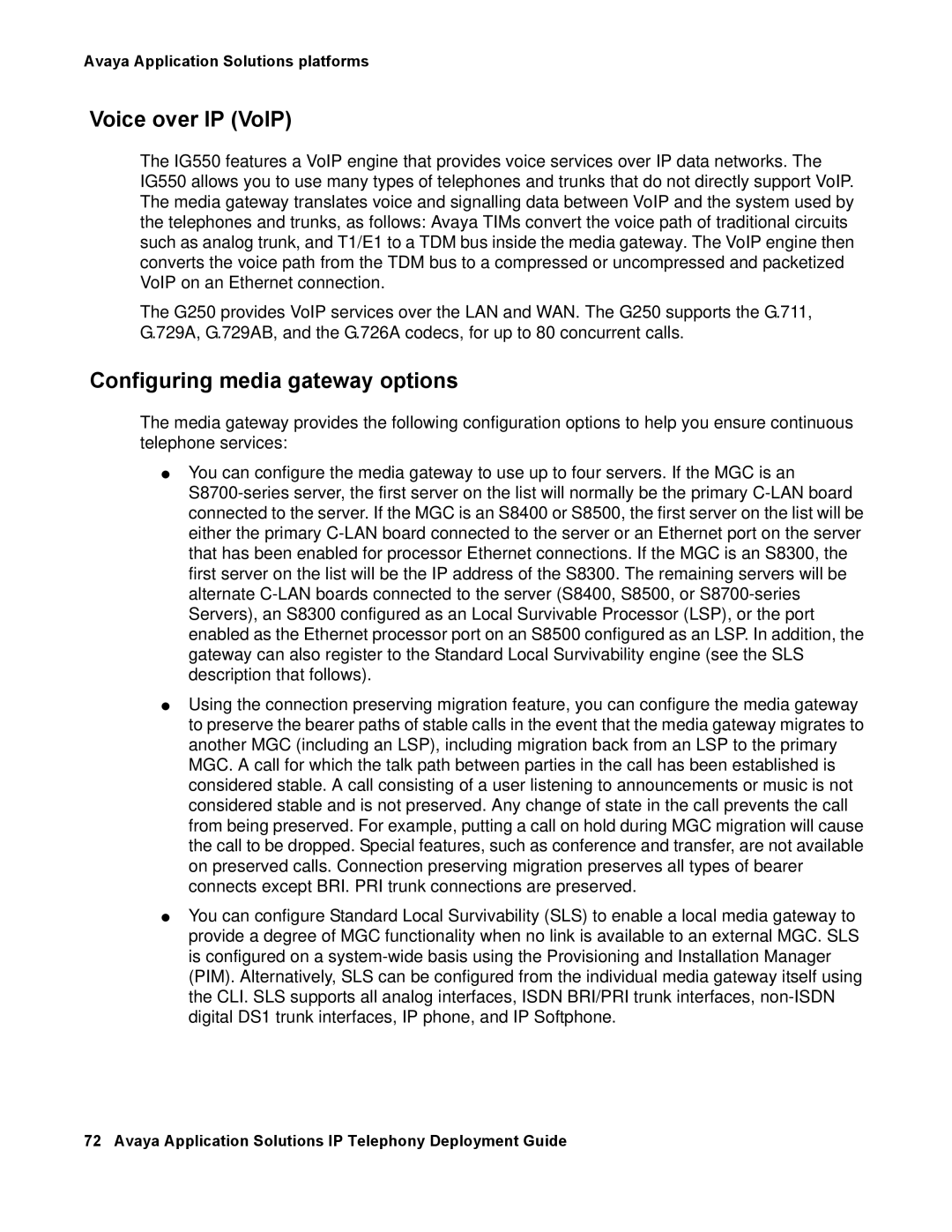Avaya Application Solutions platforms
Voice over IP (VoIP)
The IG550 features a VoIP engine that provides voice services over IP data networks. The IG550 allows you to use many types of telephones and trunks that do not directly support VoIP. The media gateway translates voice and signalling data between VoIP and the system used by the telephones and trunks, as follows: Avaya TIMs convert the voice path of traditional circuits such as analog trunk, and T1/E1 to a TDM bus inside the media gateway. The VoIP engine then converts the voice path from the TDM bus to a compressed or uncompressed and packetized VoIP on an Ethernet connection.
The G250 provides VoIP services over the LAN and WAN. The G250 supports the G.711, G.729A, G.729AB, and the G.726A codecs, for up to 80 concurrent calls.
Configuring media gateway options
The media gateway provides the following configuration options to help you ensure continuous telephone services:
●You can configure the media gateway to use up to four servers. If the MGC is an
●Using the connection preserving migration feature, you can configure the media gateway to preserve the bearer paths of stable calls in the event that the media gateway migrates to another MGC (including an LSP), including migration back from an LSP to the primary MGC. A call for which the talk path between parties in the call has been established is considered stable. A call consisting of a user listening to announcements or music is not considered stable and is not preserved. Any change of state in the call prevents the call from being preserved. For example, putting a call on hold during MGC migration will cause the call to be dropped. Special features, such as conference and transfer, are not available on preserved calls. Connection preserving migration preserves all types of bearer connects except BRI. PRI trunk connections are preserved.
●You can configure Standard Local Survivability (SLS) to enable a local media gateway to provide a degree of MGC functionality when no link is available to an external MGC. SLS is configured on a
